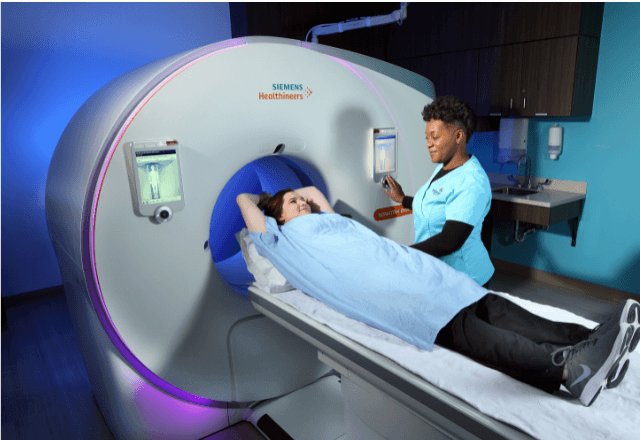Portable Ultrasound Imaging in Dairy Farms
The implementation of portable ultrasound imaging technology in dairy farms represents a significant advancement in livestock monitoring and management. This service allows for the precise evaluation of udder health, reproductive status, and overall herd performance without the need for transporting animals to centralized facilities.
Portable ultrasound systems are equipped with advanced transducers capable of producing high-resolution images that provide insights into the internal structures of cows. These devices can be operated by trained veterinarians or technicians who use them to conduct comprehensive examinations in various areas, including:
- Udder evaluation for detecting mastitis and other udder diseases.
- Pregnancy diagnosis to ensure accurate timing of calving and breeding cycles.
- Assessment of fetal position and development, which is crucial for minimizing birthing complications.
The technology supports the farm's quality management by providing real-time data that helps in making informed decisions regarding animal health and welfare. This approach not only enhances productivity but also reduces veterinary costs associated with treating illnesses or injuries.
Compliance officers will find this service particularly beneficial as it aligns with international standards such as ISO 15207 for ultrasound equipment, ensuring that the imaging devices meet strict quality benchmarks. The use of portable ultrasound in dairy farms can be seen as a proactive measure towards maintaining high standards of animal husbandry and environmental sustainability.
R&D engineers involved in developing new veterinary tools may also find value in this service by gaining practical experience with cutting-edge technology that improves diagnostic accuracy. For procurement professionals, sourcing such equipment involves careful consideration of factors like ease of use, durability, and integration into existing farm operations.
The ability to conduct these exams on-site means that farmers can quickly identify potential issues before they escalate into more serious health problems affecting productivity and profitability. By integrating portable ultrasound imaging into routine veterinary practices, dairy farms are better positioned to meet the increasing demands for transparency in food safety standards.
Benefits
The adoption of portable ultrasound imaging offers numerous advantages that contribute significantly to enhancing farm productivity and efficiency. One major benefit is improved accuracy in diagnosing udder health issues, which directly impacts milk production levels. Early detection through regular ultrasounds allows for timely intervention measures, potentially preventing long-term damage caused by untreated infections like mastitis.
Another key advantage lies in the convenience offered to both farmers and their livestock. With portable systems available on-site, there's no need to stress animals by transporting them elsewhere for examination, thereby reducing stress-related health risks associated with movement. This non-invasive approach also ensures minimal disruption to daily routines.
For quality managers overseeing supply chains, having reliable data from consistent ultrasounds provides valuable information about the overall well-being of the herd over time. Such insights enable better planning for breeding programs and resource allocation across different sections of the farm.
The technology supports sustainability goals by promoting healthier animals that require fewer treatments and antibiotics, thus reducing environmental impact through lower waste generation. Additionally, it contributes to ethical farming practices by ensuring humane treatment standards are met consistently throughout operations.
Quality and Reliability Assurance
The quality assurance process for portable ultrasound imaging in dairy farms involves multiple layers of validation and certification that ensure the accuracy, reliability, and safety of every examination conducted. Each device undergoes rigorous testing against international standards like IEC 60601-2-38, which governs medical electrical equipment used during diagnostic procedures.
During installation, technicians perform calibration checks using reference phantoms provided by the manufacturer to ensure that all parameters meet specified tolerances. Regular maintenance schedules are implemented to keep systems functioning optimally throughout their lifecycle. Field service personnel are trained extensively on proper operation techniques and troubleshooting methods to minimize downtime.
Data integrity is maintained through secure transmission protocols ensuring that images captured during exams remain confidential and accessible only to authorized personnel within the farm. Compliance officers play a crucial role in establishing policies around data retention periods, access controls, and audit trails for all transactions involving patient information.
International Acceptance and Recognition
The use of portable ultrasound imaging technology has gained widespread acceptance across many countries due to its proven effectiveness in improving animal health outcomes. Organizations such as the World Organization for Animal Health (OIE) recognize the importance of adopting modern diagnostic methods that contribute positively towards global food safety initiatives.
Several nations have incorporated this practice into their official veterinary protocols, mandating regular ultrasounds during certain stages of care for both dairy and beef cattle. For instance, in Europe, Directive 2016/429/EU emphasizes the need for continuous monitoring of udder health to prevent zoonotic diseases from spreading within herds.
As standards evolve globally, so too does recognition among stakeholders involved in livestock production. Veterinarians and researchers continue to advocate for the inclusion of portable ultrasound technology as a standard practice, citing evidence showing improved reproductive success rates and reduced mortality figures associated with timely interventions based on ultrasonic findings.





